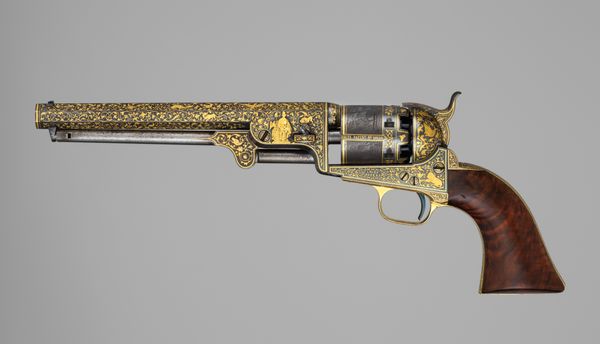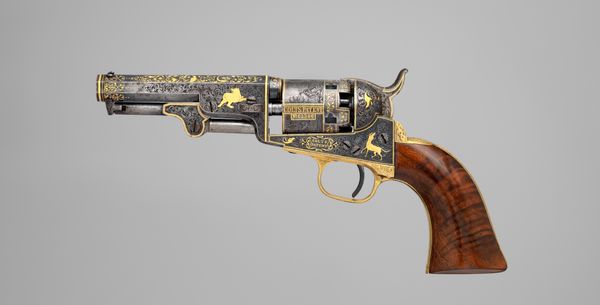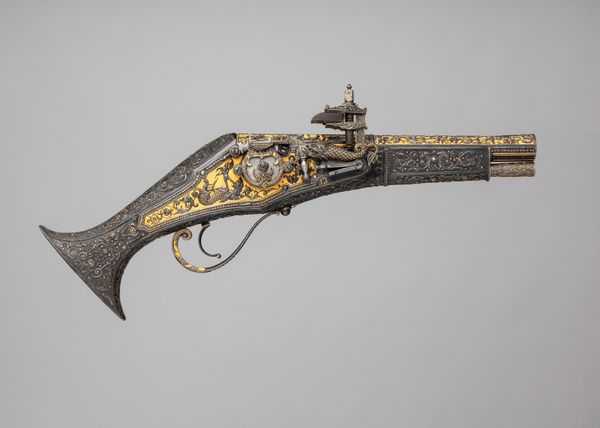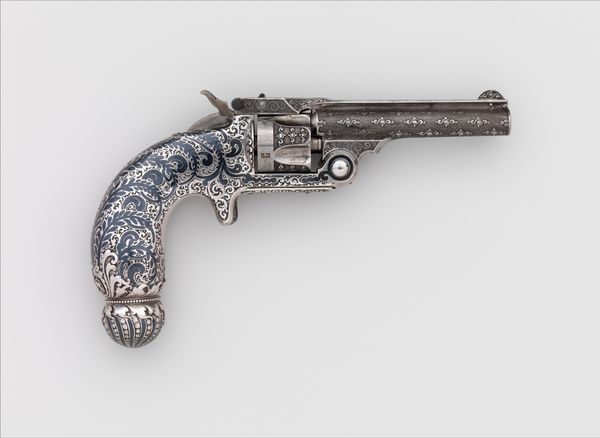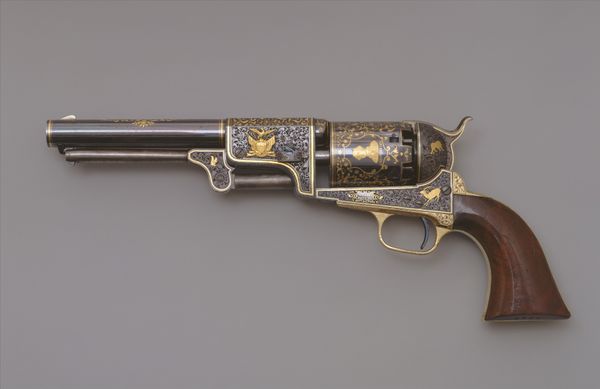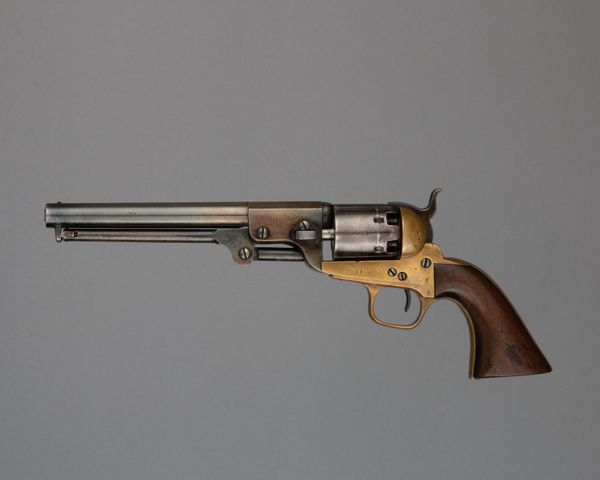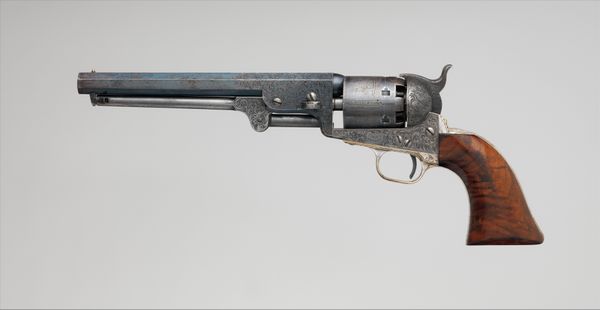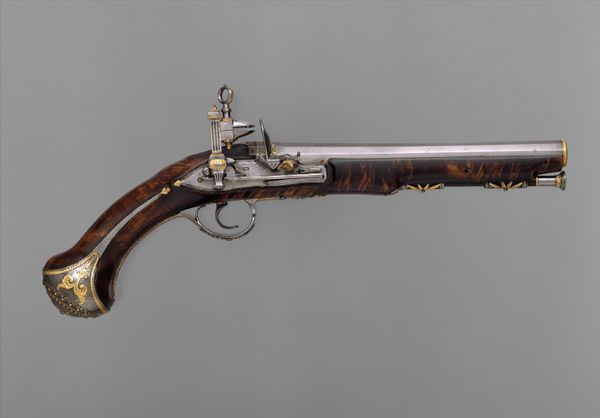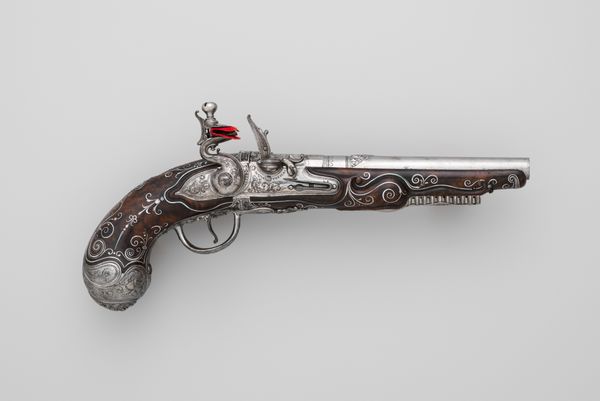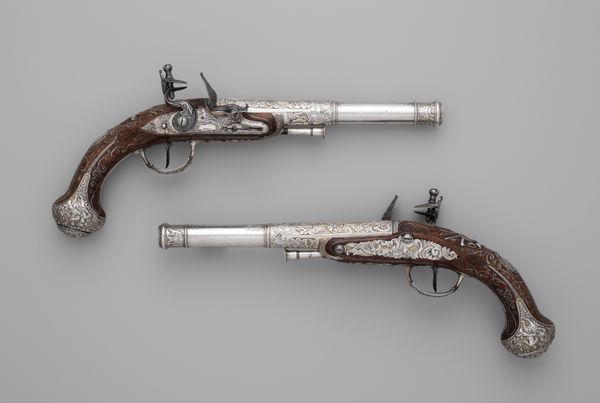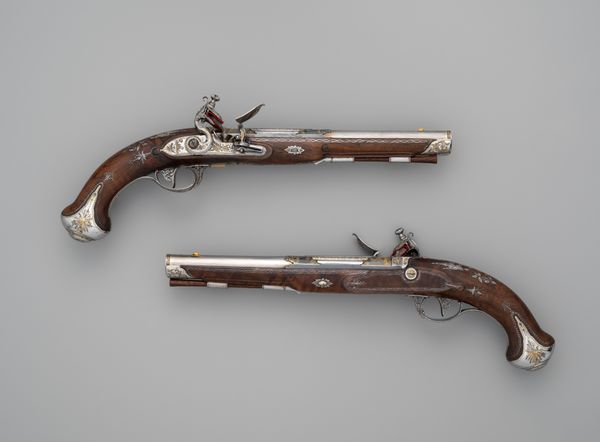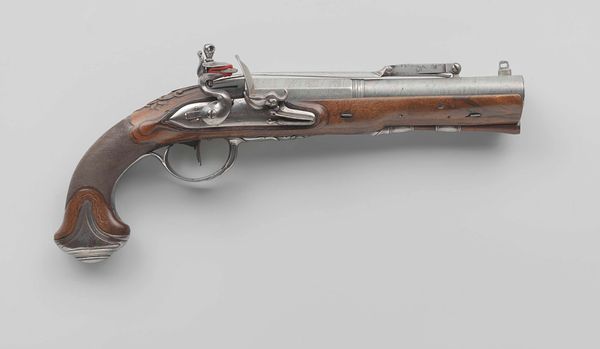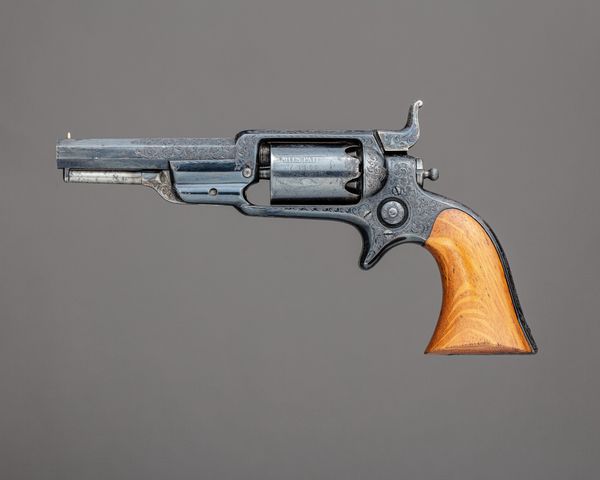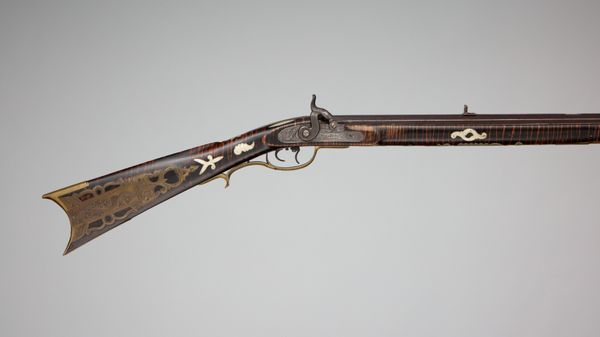
Smith & Wesson Model 1 ½ Second Issue Revolver (serial no. 30451) with Case 1869
0:00
0:00
metal, sculpture, engraving
#
metal
#
sculpture
#
sculpture
#
united-states
#
history-painting
#
armor
#
engraving
#
realism
#
statue
Dimensions: pistol (a): L. 7 11/16 in. (19.5 cm); L. of barrel 3 1/2 in. (8.9 cm); Cal. .32 in. (8.1 mm) [.32 Rimfire Long]; case (b): 8 7/8 x 5 1/4 x 1 7/8 in. (22.5 x 13.3 x 4.8 cm)
Copyright: Public Domain
Editor: Here we have a Smith & Wesson Model 1 ½ Second Issue Revolver from 1869, a fascinating metal object, heavily engraved. It almost feels like an exercise in elevating a utilitarian object to the level of fine art. How would you interpret this piece, looking at its materiality and context? Curator: Its material presence is striking, isn’t it? This isn’t just a tool; it’s a commodity fetish. Think about the labor involved. The gun was clearly designed for the market that existed post Civil War with money to be made and power to hold onto. Editor: So the decorative engravings and the choice of materials—the metal itself, the finish—they're all about signaling value and power in a specific social context? Curator: Precisely. The means of production, from raw ore to the final polish, all speak to a specific socioeconomic stratum and historical moment. The engraving elevates the value; this isn't merely a functional tool; it’s an object imbued with cultural meaning through the act of labor and artistry. And we must acknowledge what that artistry is masking, no? Editor: Right, the object itself embodies the history of violence. So, the revolver embodies American industrial processes? Curator: Exactly. By understanding these systems, we challenge that romanticized narrative of artistic genius. What materials are chosen, how those are processed – the art itself comes into view as an entity resulting from larger movements. What does the Second Issue suggest to you? Editor: That there's a demand, a consumption of these products in 1869? Curator: Absolutely. Seeing this revolver through the lens of its materials and manufacturing process gives us a much more tangible understanding of its cultural significance. The raw material, the labor, the cultural impact, and artistry combined... it gives it more depth, more to consider. Editor: Definitely. Looking at art through that material lens brings in a lot more to think about in terms of how it's embedded in society. Curator: It provides an alternate yet fundamental way of examining and understanding how that labor interacts with and manifests value in a culture of commodified violence.
Comments
No comments
Be the first to comment and join the conversation on the ultimate creative platform.
